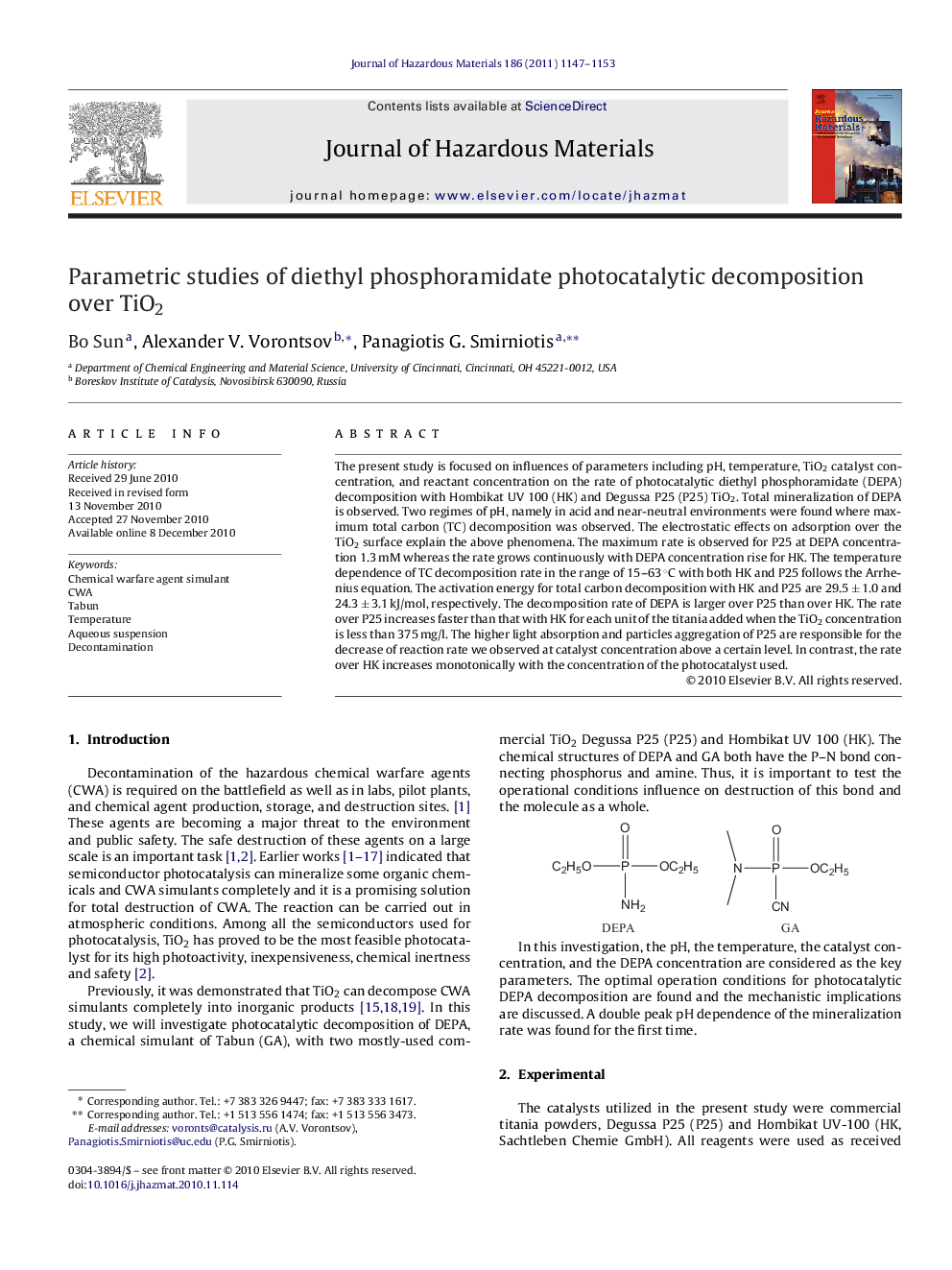| Article ID | Journal | Published Year | Pages | File Type |
|---|---|---|---|---|
| 6972657 | Journal of Hazardous Materials | 2011 | 7 Pages |
Abstract
The present study is focused on influences of parameters including pH, temperature, TiO2 catalyst concentration, and reactant concentration on the rate of photocatalytic diethyl phosphoramidate (DEPA) decomposition with Hombikat UV 100 (HK) and Degussa P25 (P25) TiO2. Total mineralization of DEPA is observed. Two regimes of pH, namely in acid and near-neutral environments were found where maximum total carbon (TC) decomposition was observed. The electrostatic effects on adsorption over the TiO2 surface explain the above phenomena. The maximum rate is observed for P25 at DEPA concentration 1.3 mM whereas the rate grows continuously with DEPA concentration rise for HK. The temperature dependence of TC decomposition rate in the range of 15-63 °C with both HK and P25 follows the Arrhenius equation. The activation energy for total carbon decomposition with HK and P25 are 29.5 ± 1.0 and 24.3 ± 3.1 kJ/mol, respectively. The decomposition rate of DEPA is larger over P25 than over HK. The rate over P25 increases faster than that with HK for each unit of the titania added when the TiO2 concentration is less than 375 mg/l. The higher light absorption and particles aggregation of P25 are responsible for the decrease of reaction rate we observed at catalyst concentration above a certain level. In contrast, the rate over HK increases monotonically with the concentration of the photocatalyst used.
Related Topics
Physical Sciences and Engineering
Chemical Engineering
Chemical Health and Safety
Authors
Bo Sun, Alexander V. Vorontsov, Panagiotis G. Smirniotis,
